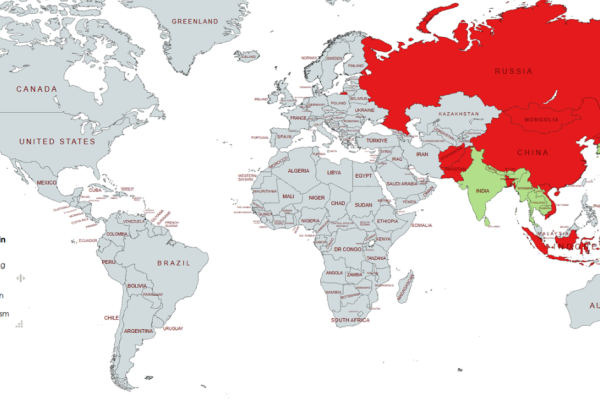Namobudha stands as one of the venerable and ancient Buddhist sites, rivaled in sacredness only by Kathmandu’s Swayambhu and Boudha. Nestled in Nepal’s Kavrepalanchok District, about 50 km east of Kathmandu via the Banepa-Panauti route, this site is steeped in religious significance. Surrounded by tranquil environs and verdant hills, Namobudha is gaining prominence as a pivotal Buddhist pilgrimage destination. Additionally, it is increasingly drawing attention as a favored spot for tourists, both domestic and international, year after year. Among the rare events that have happened in the world, a prince sitting in the comfort of his palace gave self-sacrificed (benevolent compassion) to a starving wild animal, a tigress and her cubes. Prince Mahasattva, the youngest son of King Maharatha of Panchal (Panauti), has become one of its protagonists. Nepali Greatest Poet Lakshmi Prasad Devkota may have expressed his sentiments by delving into the lives of two princes, Mahasattva and Siddhartha Gautama. All are searching for happiness; where is that happiness!Give yourself to others where it belongs!! Prominent Poet Mr. Laxmi Prasad Devkota According to Jataka legend, in ancient times (about 6,000 years ago, during the Treta era?), King Maharatha established his capital in Panchal (Panauti) on the east side of present Kathmandu with a population of about 5,000. On the day of Kartik (October) full moon, the king, queen, and three princes, Mahadev, Mahaprasad, and Mahasattva accompanied by the court’s hunting party, went out for hunting in Hiranyagiri Gandhamadan mountain (currently Kusume community forest). One morning, three princes went together to hunt. As they were returning to the royal hunting camp in the evening after their hunt, they saw a thin and weak tigress and five newborn cubs at the foot of a tree in the forest, on the brink of death. The princes decided they would not hunt the weak tigress and her cubs, and quietly went back to the camp (residence). However, among them, Mahasattva, the youngest prince, felt compassion for those innocent creatures. Unfortunately, he could not express his feelings in front of his brothers. The younger prince went back to the tiger’s cave under the pretense of going to the toilet, while the two brothers went to the camp. Prince Mahasattva set aside his weapons, removed his clothes, and prostrated himself in front of tigress. The tigress did not harm the prince, either out of weakness or fear. Mahasattva offered his own body to the weakened hunger of the tigress and her five newborn cubs by cutting himself with a weapon, feeding them his blood and flesh, ‘donating’ his life to sustain the lives of these hungry creatures, and thus attained enlightenment as a Bodhisattva. The royal families sat anxiously in the camp all night, awaiting the return of Prince Mahasattva. However, Prince Mahasattva did not return. The next morning, the members of the royal family ventured into the forest to search for the prince. A team found blood spots and human bones at the top of the dense forest. The king was informed of the findings. Everyone, including the king, gathered at the site where the bloodshed and bones were found. It was not difficult to deduce his death from the clothes, weapons, and ornaments found at the base of the tree. The courtiers, including Prince Mahasattva’s brothers, concluded that a hungry tigress and cubs had consumed the prince. However, the court astrologers asserted that the prince was no ordinary person; he had sacrificed himself to ‘save someone’s life’ and had attained the state of a Bodhisattva According to the advice of courtiers, priests, and astrologers, the remaining body of the prince, along with his clothes, weapons, and ornaments, was brought to the camp where queen Satyavati was staying. The prince’s jewels, weapons, and other funeral items were also taken from the palace. Near the campsite, a pit was dug properly, and the prince’s remaining remains, along with his weapons, jewelry, and clothes, were placed there. After the prince’s funeral, preparations were made to return to the palace, but the queen chose not to do so. With the queen’s decision to stay, both princes Mahadev and Mahaprasad remained with her. The king returned to the palace with the other troops, leaving some guards to take care of the queen and the princes. They stayed at the funeral site for a few months before the queen and the princes finally returned to the palace. After the death of her youngest son, the distraught queen could not stay in the palace. Witnessing her grief, the king abdicated the throne to Prince Mahadev, and the royal couple took retired life. Overwhelmed by memories of the prince, the parents went at their son attained enlightenment and reached the Kankamani (Sankheshwari River) Holy place at the edge of the forest. There, they meditated and renounced worldly life. In their memory, an open temple of the Shankheswari (Kirat regime style) has been established. According to the Swayambhu Purana, about 3500 years after Prince Mahasattva enlightened with Bodhisattva, Siddhartha Gautama Buddha visited Kathmandu during the reign of the seventh Kirati king, Jitedasti. During this visit, he traveled to the Hiranyagiri Gandhamadan Hill via Thimi, Bhaktapur, Nala, Panauti, Ite, and Shankheswari. There, he sat near the mausoleum where Prince Mahasattva was buried and meditated for a month. After his meditation, he circumambulated the mausoleum three times and humbly proclaimed, “न:म बुद्ध (Nama Buddha).” It is believed that from that day onwards, the tomb’s name was changed to “न:म बुद्ध”. The Newars of Kathmandu, Rosi Valley, and surrounding areas refer to this place as Nama (Namo) Buddha Namra/Namura Dhyo and simply as Namra/Namura. Recently, nearly everyone has adopted Namo Buddha and the municipality has been named with Namo Buddha Municipality. According to Kimbdanti (myth), a small chaitya was built on top of the Samadhi (mound) during the Kirat period to honor the great soul after the visit of Gautama Buddha. King Mandev I of the Lichchhavi period, being a follower of Buddhism, had made a stone idol of Princes Mahadev and Mahaprasad placed…










